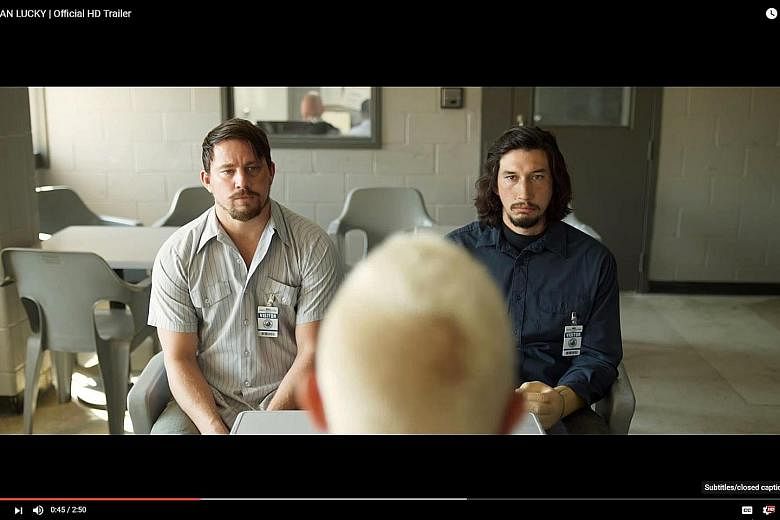LOS ANGELES • Which director would not want total control over how his films are made and marketed?
Steven Soderbergh, the iconoclast behind Erin Brockovich (2000) and Sex, Lies And Videotape (1989), was so exasperated by the movie business, both financially and creatively, that he even announced his retirement in 2011.
He said Side Effects in 2013 would be his last film.
Now he is back - and betting that an unorthodox distribution plan for his new heist comedy, Logan Lucky, will serve as a model for directors fed up with the Hollywood system.
The financial story of Logan Lucky, which arrives in theatres on Aug 18, starts in the autumn of 2014.
According to Soderbergh, a friend asked him to read the script. He loved the idea and wanted to direct the film.
But first, he needed a plan that satisfied his creative and economic demands. It was relatively easy to raise the US$29 million (S$39 million) to make Logan Lucky, which stars Channing Tatum, Daniel Craig and Riley Keough.
Once his cast was in place - all getting profit participation if the film succeeds - Soderbergh sold off overseas distribution rights, a standard practice in the independent film business.
But the norm for a wide release, meaning at least 2,500 locations in North America on opening weekend, involves renting a major studio's machinery.
A studio such as Warner Bros foots the marketing bill - about US$40 million is standard for a production such as Logan Lucky - and handles all aspects of the release.
For its services, the studio collects a fee (about 15 per cent of total ticket sales) and deducts its expenses. Any remaining profit goes to the owners of the film.
For Soderbergh, that route was a non-starter. "You're way too far away from your money," he said.
Soderbergh, who won an Oscar in 2001 for directing drug war drama Traffic (2000), wanted full creative control over Logan Lucky's advertising too. He said studios had never given him absolute say over a campaign before.
He considered, among other options, cutting out distributors completely by going straight to multiplex operators.
He ultimately connected with Hollywood's leading authority on distribution: Mr Dan Fellman, a former Warner Bros executive who runs a consulting business.
Mr Fellman, who became an executive producer on Logan Lucky, devised a plan that Soderbergh liked.
They would raise about US$20 million in marketing money by selling a portion of the film's non-theatrical rights. Amazon, for instance, bought streaming rights.
Then they would make an atypical distribution deal with Bleecker Street Media, a start-up with a total staff of about 20. Bleecker would execute the marketing campaign - with Soderbergh approving everything - and get a token fee of less than US$1 million.
If the film hit certain box-office thresholds, Bleecker would receive a slice of ticket sales.
Soderbergh noted that the boxoffice bar for success is lower under this set-up.
With nearly everything prepaid, and no hefty distributor fees coming off the top, even a modest US$15 million opening would be a win.
Logan Lucky, which has received very strong early reviews, has also generated headlines over its script.
The screenplay is credited to Rebecca Blunt, who does not seem to exist. Who wrote it?
That mystery may be part of the marketing plan. In response to questions about the screenplay's author, Soderbergh said in an e-mail: "Clarify? Me? Why would I do that?
"I can tell you that Rebecca Blunt is enjoying all this immensely."
NYTIMES

